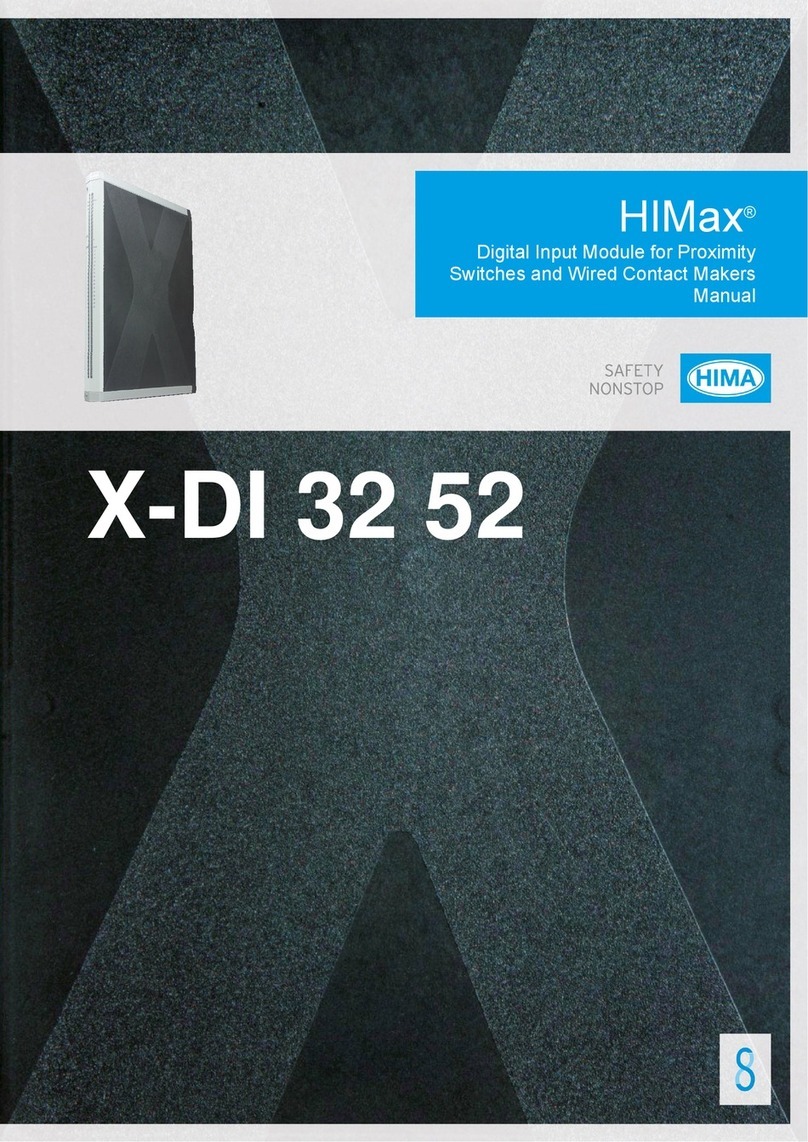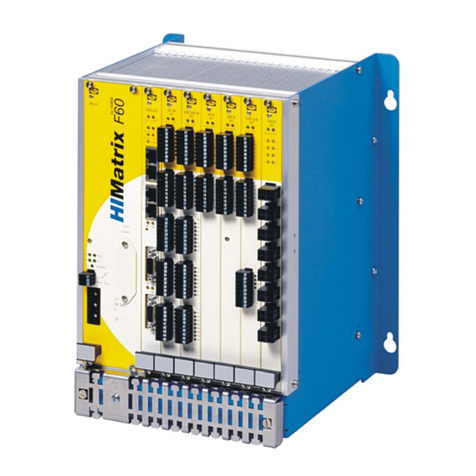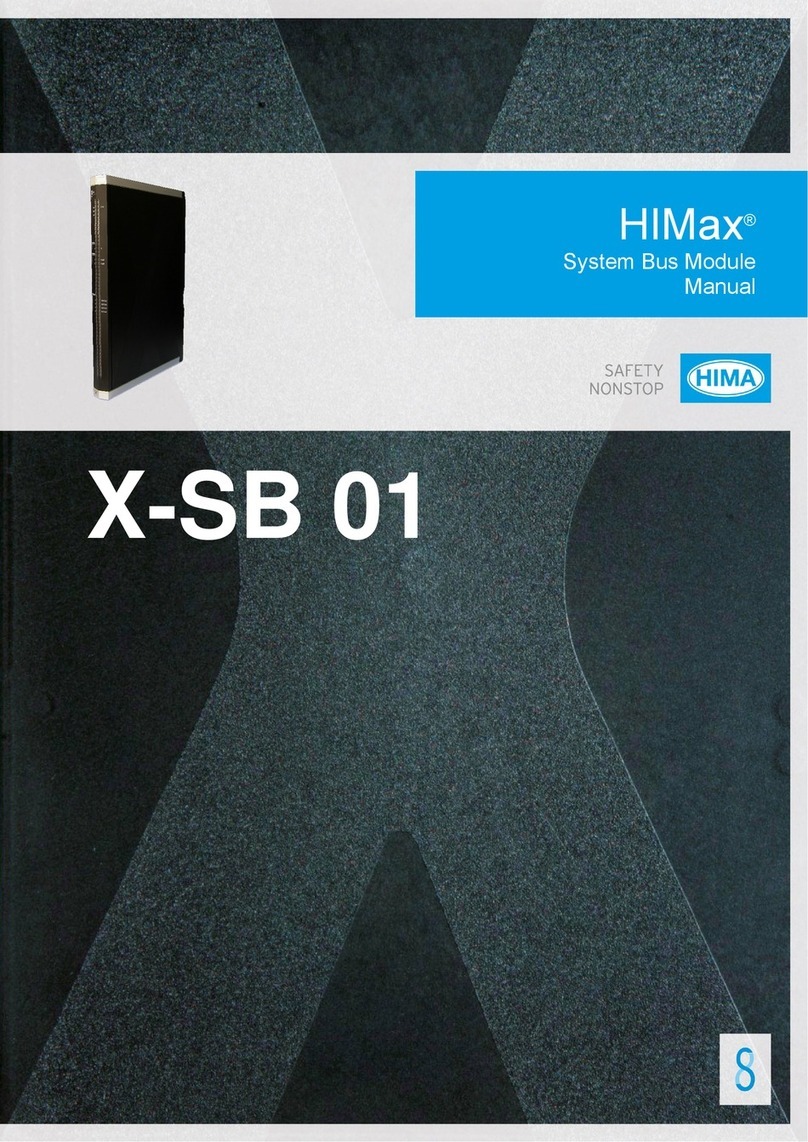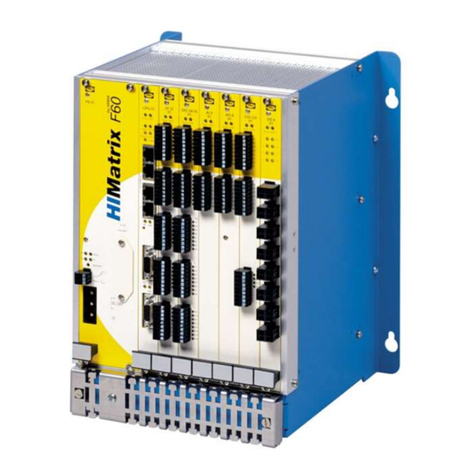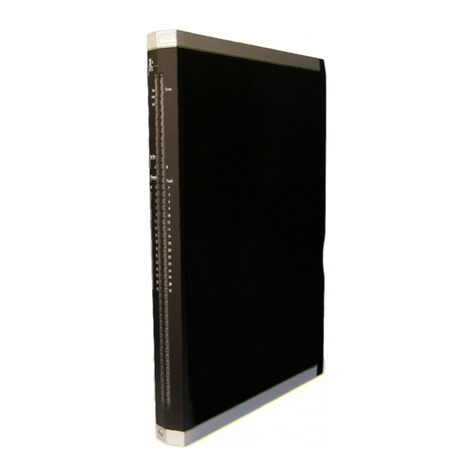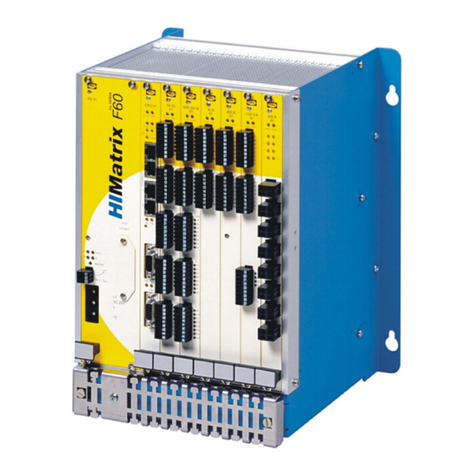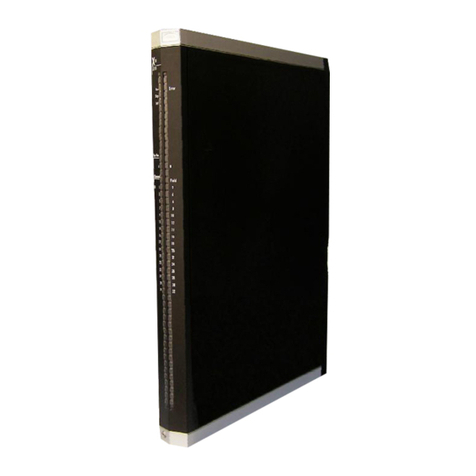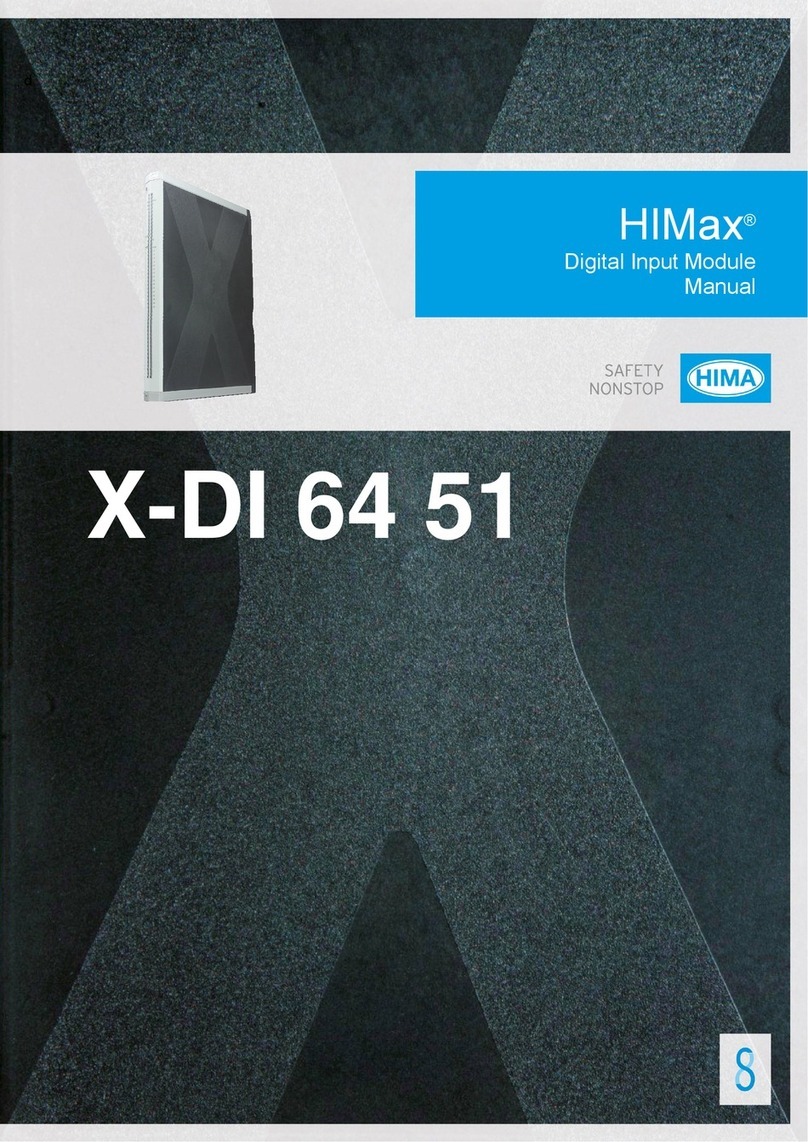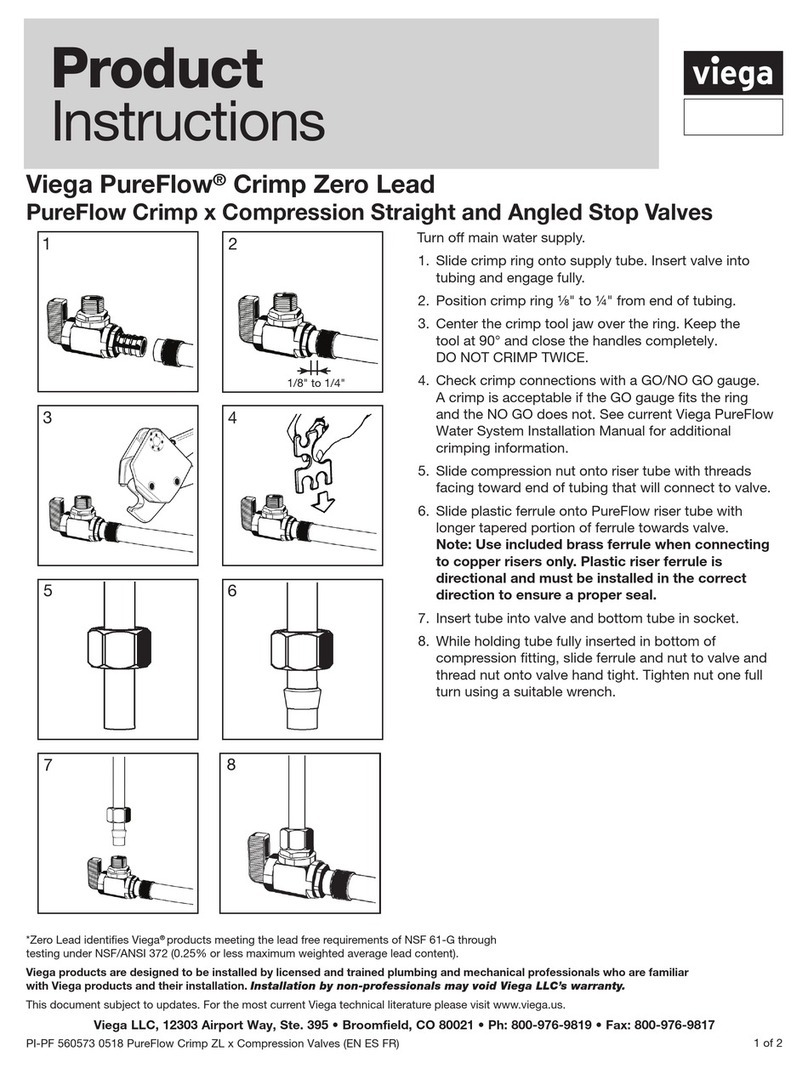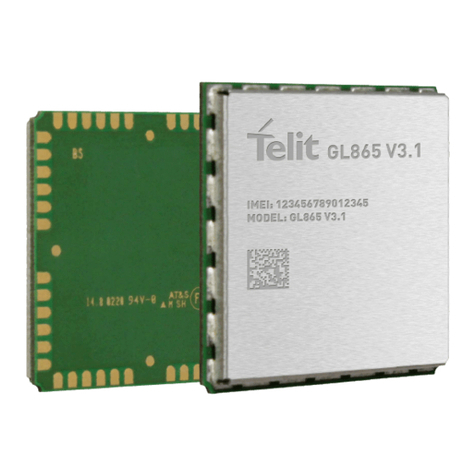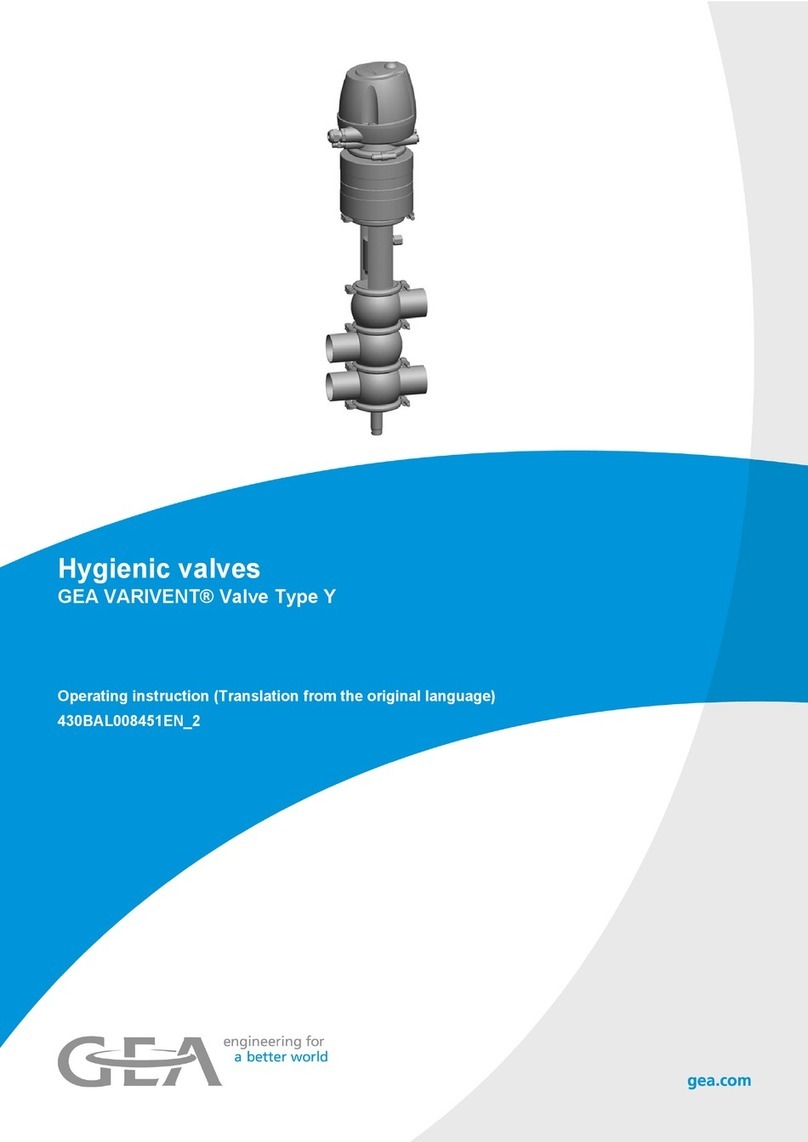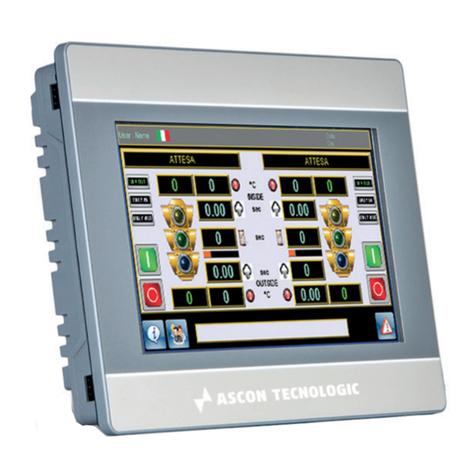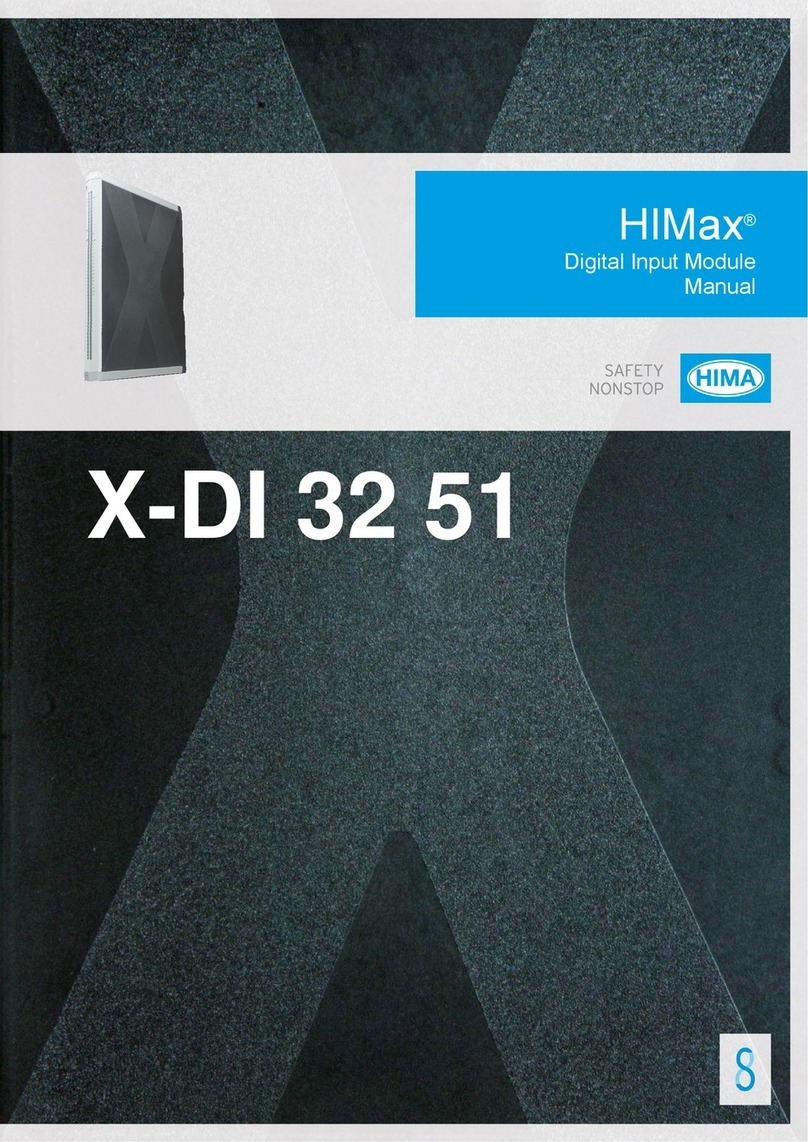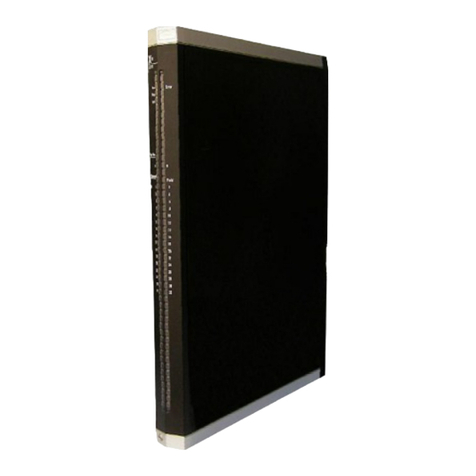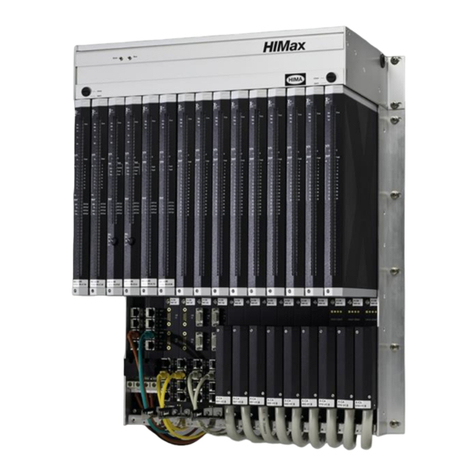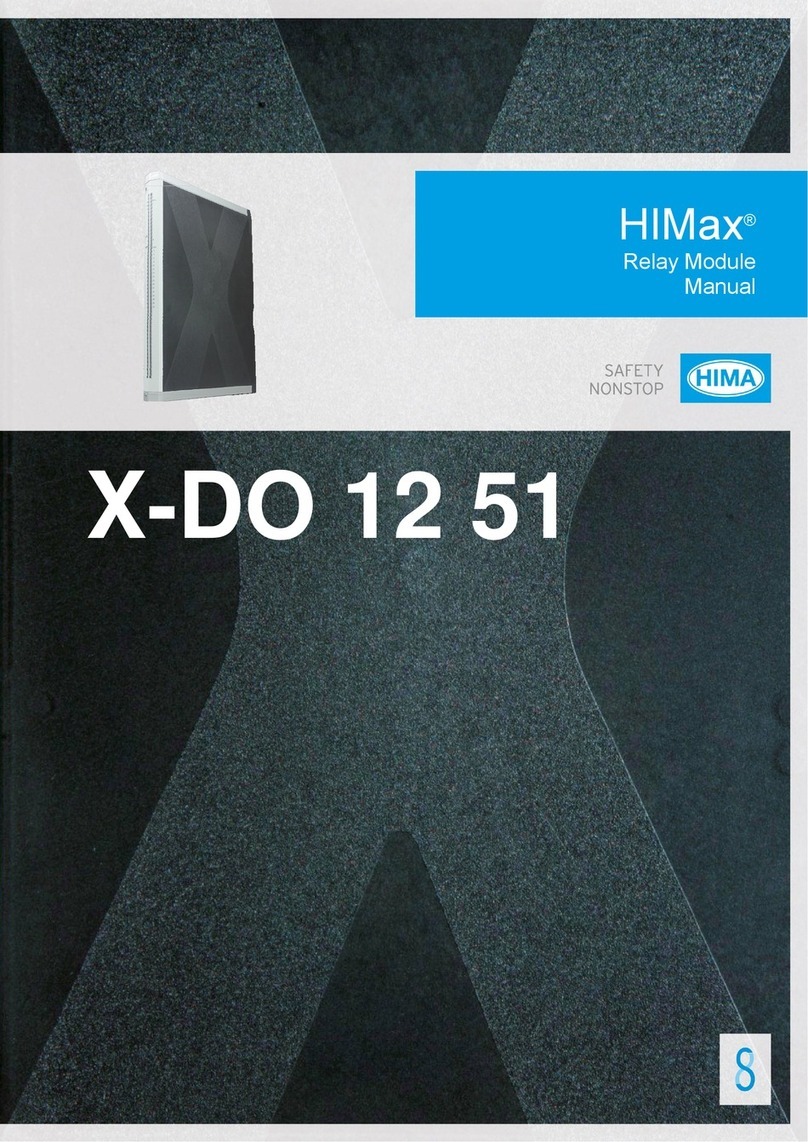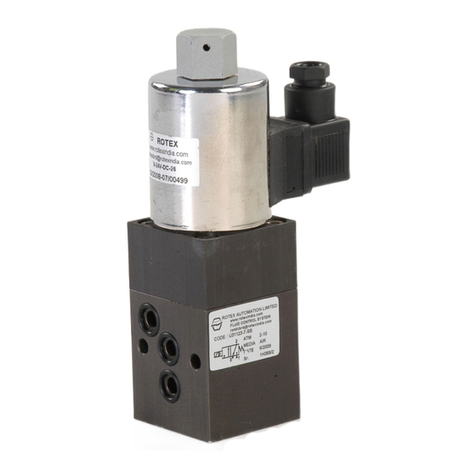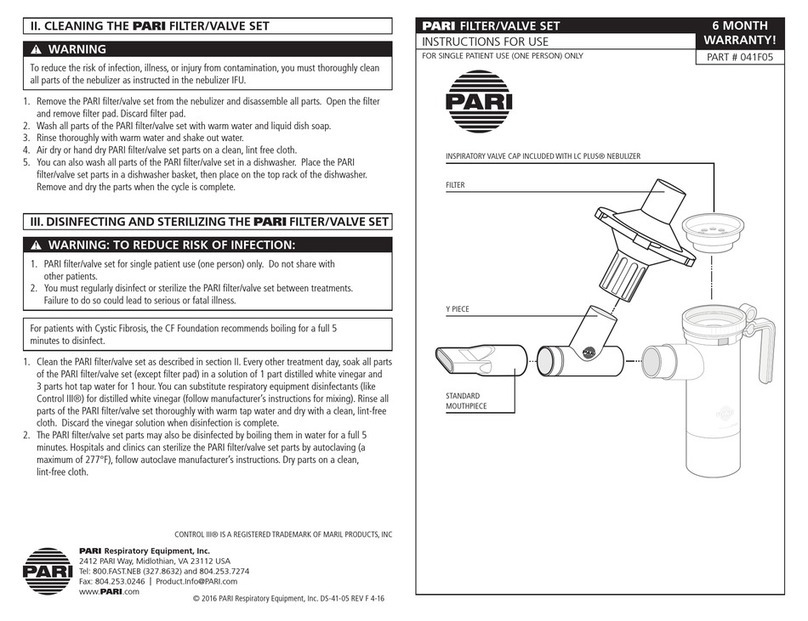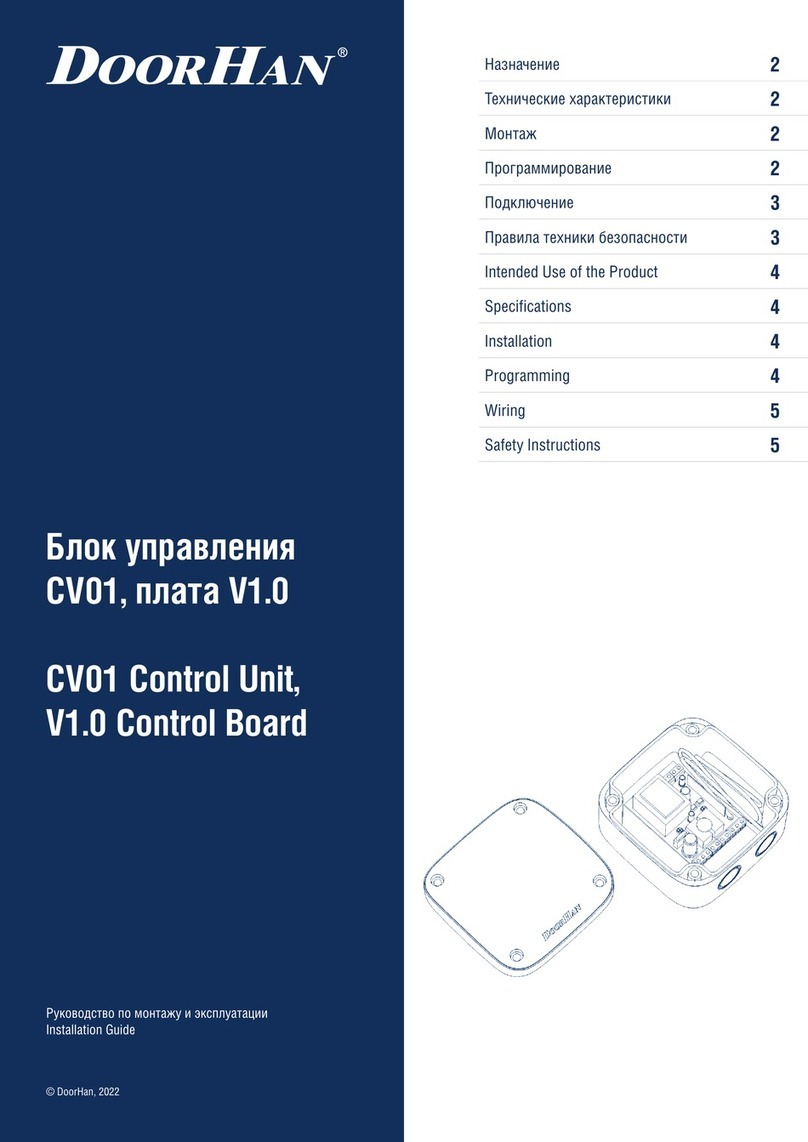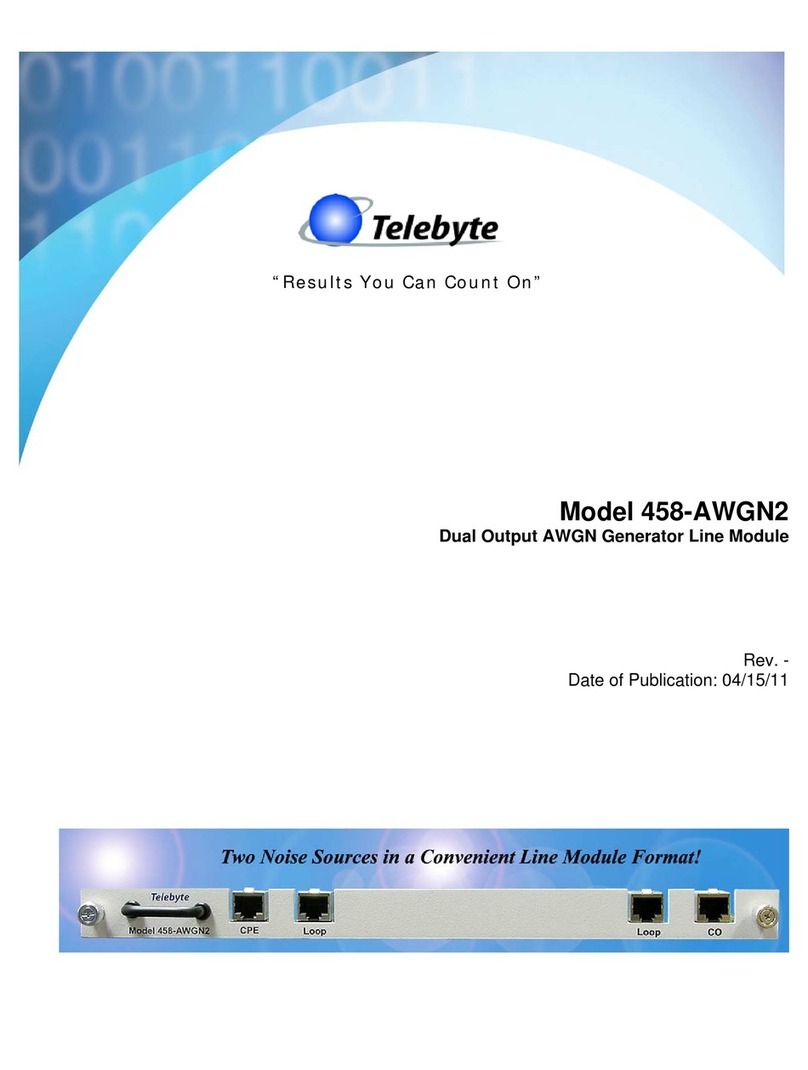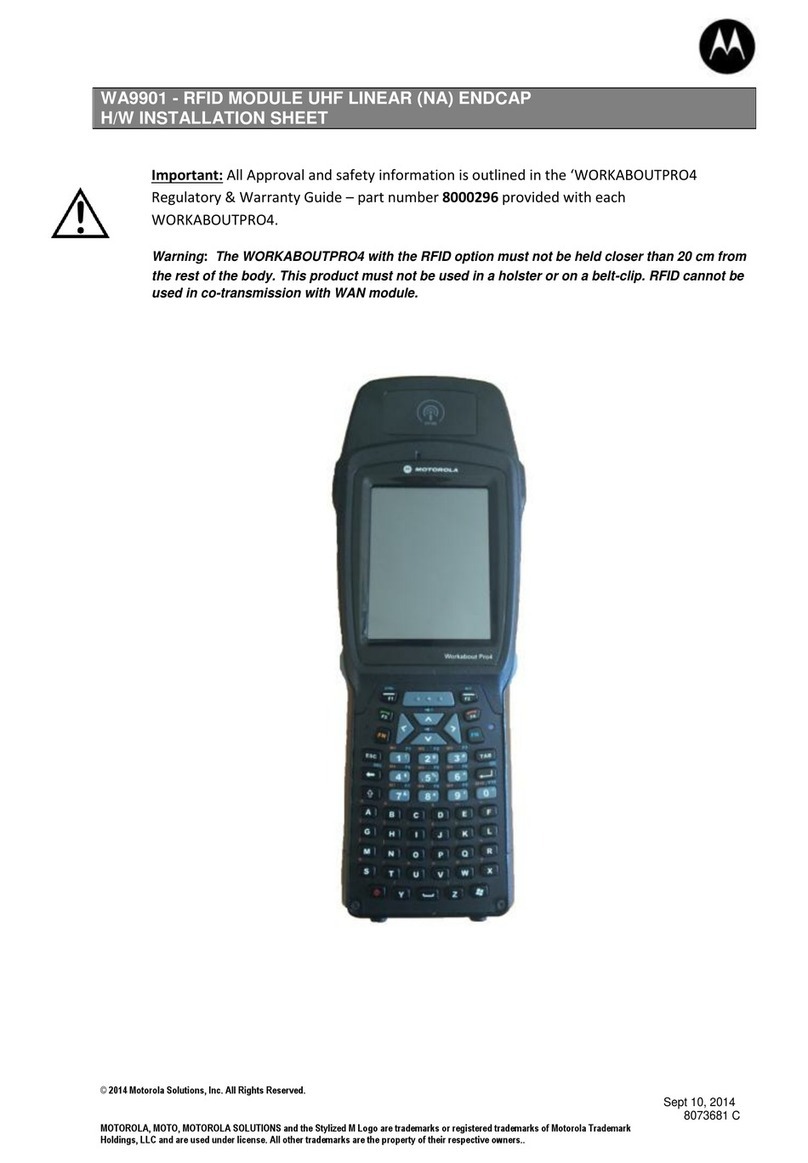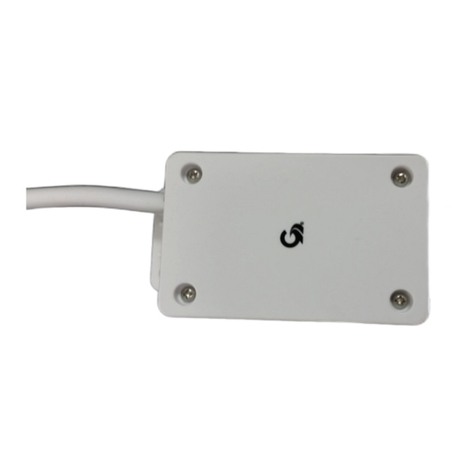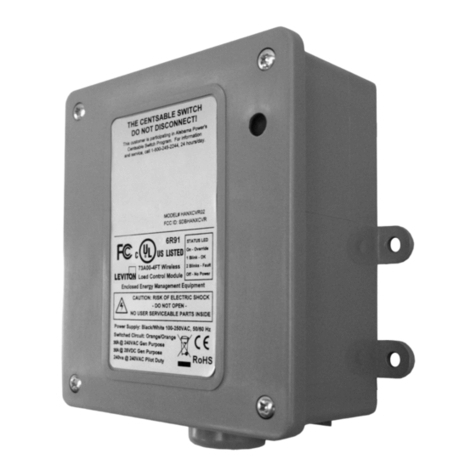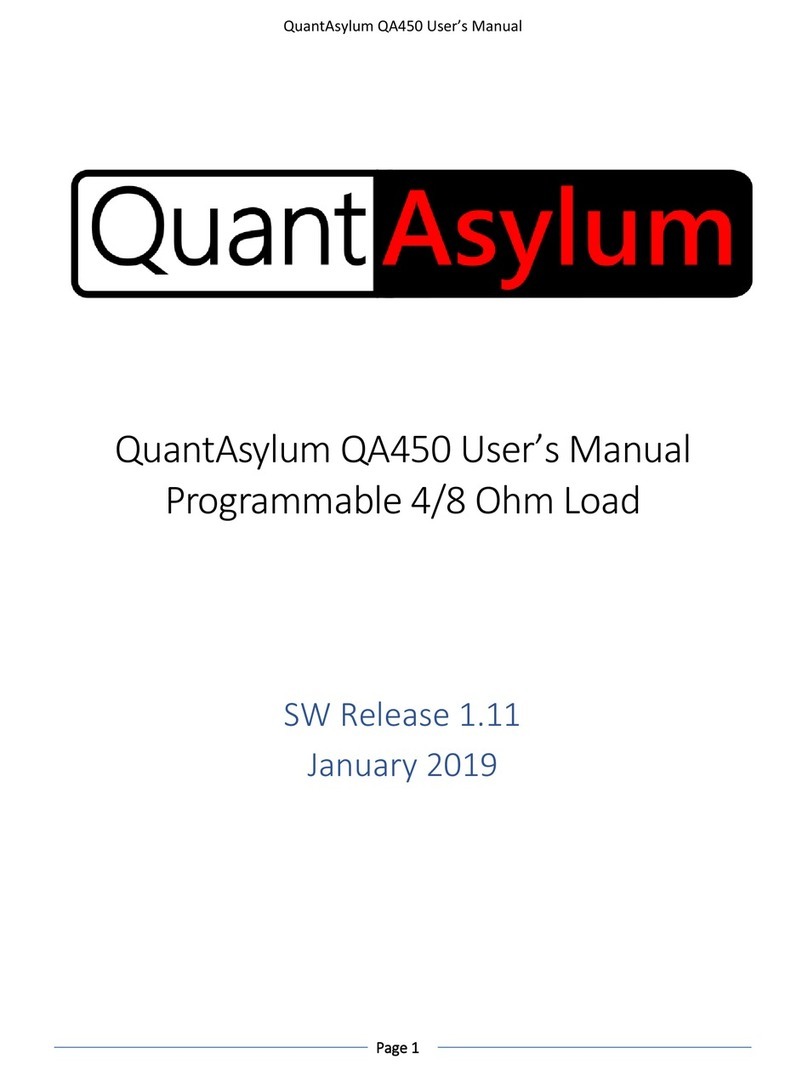
Table of Contents X-CI 24 01
HI 801 113 E Rev. 4.00 Page 4 of 68
4Start-up................................................................. 29
4.1 Mounting ...............................................................................................................29
4.1.1 Wiring Inputs Not in Use.........................................................................................29
4.2 Mounting and Removing the Module..................................................................30
4.2.1 Mounting a Connector Board .................................................................................30
4.2.2 Using the Sensor Selection Plug to Define the Sensors ........................................32
4.2.3 Mounting and Removing the Module......................................................................33
4.3 Counter Module Sampling...................................................................................35
4.3.1 Type of Evaluation Count Pulses ...........................................................................36
4.4 Deviation Tab........................................................................................................38
4.5 Configuring the Counter Module in SILworX.....................................................39
4.5.1 Tab: Module ...........................................................................................................40
4.5.2 Tab: I/O Submodule CI24_01................................................................................. 41
4.5.3 Tab: I/O Submodule CI24_01: Channels................................................................42
4.5.4 Submodule Status [DWORD] ................................................................................. 46
4.5.5 Diagnostic Status [DWORD]...................................................................................47
4.6 Connection Variants.............................................................................................48
4.6.1 Single-Channel Input Wiring................................................................................... 48
4.6.2 Single-Channel Input Connection via X-FTA 002................................................... 50
4.6.3 Redundant Input Wiring..........................................................................................52
4.6.4 Measuring the Rotational Speed with Recognition of Rotation Direction ............... 56
5Operation .............................................................. 58
5.1 Handling................................................................................................................58
5.2 Diagnosis ..............................................................................................................58
6Maintenance.......................................................... 59
6.1 Maintenance Measures........................................................................................59
6.1.1 Loading the Operating System...............................................................................59
6.1.2 Proof Test...............................................................................................................59
7Decommissioning.................................................. 60
8Transport .............................................................. 61
9Disposal................................................................ 62
Appendix............................................................... 64
Glossary................................................................................................................64
Index of Figures....................................................................................................65
Index of Tables .....................................................................................................66
Index......................................................................................................................67




















